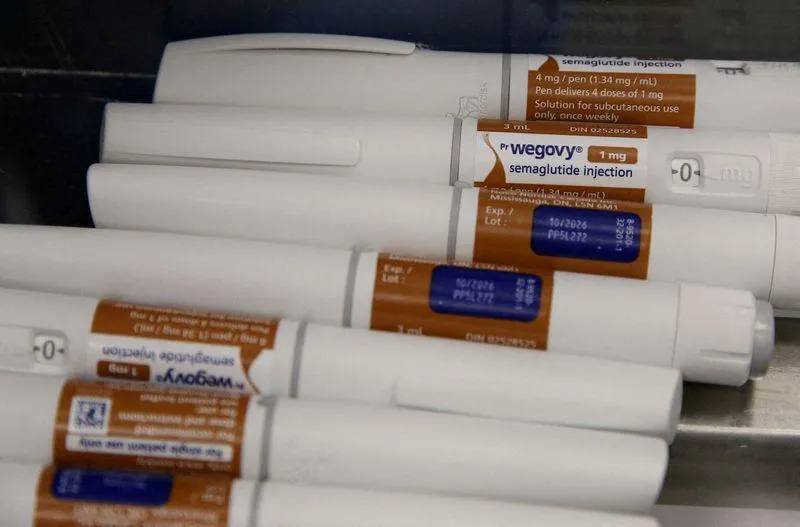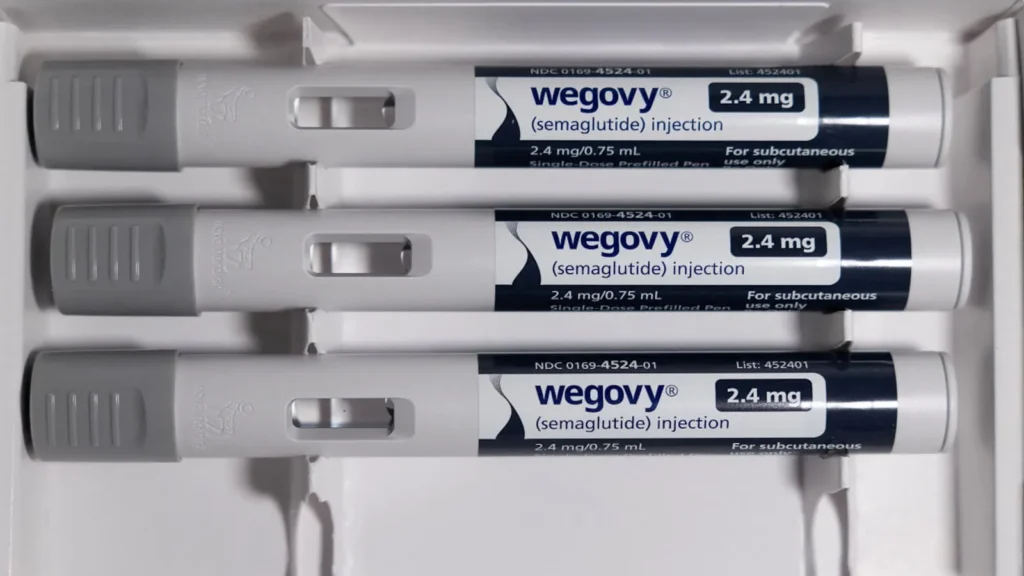In recent months, India has witnessed a dramatic surge in interest around weight-loss medications, specifically Wegovy (semaglutide) and Mounjaro (tirzepatide). Originally developed to manage type 2 diabetes, these medications have proven to be powerful tools in combating obesity—a health crisis that continues to rise across urban and semi-urban India. Their arrival has not only stirred the medical community but has also ignited a nationwide demand for fast-acting, medically approved solutions for weight loss.
The Obesity Epidemic in India
India is undergoing a nutritional and lifestyle transition. Increasing urbanization, sedentary jobs, reduced physical activity, and changing food habits have contributed to an obesity epidemic. Millions of Indians now struggle with being overweight or obese, leading to a spike in related conditions such as hypertension, type 2 diabetes, cardiovascular diseases, and non-alcoholic fatty liver disease.
With nearly one in four adults classified as overweight or obese, there has been an urgent call for interventions beyond traditional diet and exercise. This is where Wegovy and Mounjaro have entered the Indian pharmaceutical market with significant promise.

How Wegovy and Mounjaro Work
Both Wegovy and Mounjaro belong to a class of medications called GLP-1 receptor agonists, with Mounjaro offering a dual-action mechanism by also acting on GIP receptors. These drugs mimic hormones that regulate hunger and insulin secretion. They primarily work by:
- Reducing appetite and food intake
- Slowing down gastric emptying
- Increasing satiety after meals
- Enhancing insulin sensitivity
Wegovy contains semaglutide, which is administered as a once-weekly subcutaneous injection. Mounjaro contains tirzepatide, also injected weekly, and is considered more potent due to its dual-receptor activity.
Clinical trials have shown that these medications can lead to 15–20% reductions in body weight over a period of several months, especially when combined with lifestyle interventions.
India’s Enthusiastic Market Entry
A new era in the treatment of obesity has begun with the introduction of these medications in India. Pharmaceutical companies have introduced both drugs through tiered pricing to cater to different income groups, although affordability remains a barrier for many.
Despite relatively high prices, initial sales have been strong in metro cities. Clinics report surging demand from professionals, fitness enthusiasts, and patients with obesity-related conditions seeking a medically supervised way to lose weight.
India’s upper-middle class and affluent segments, already familiar with international trends and aesthetics, have shown particular interest. From Bollywood actors to tech executives, the buzz around GLP-1-based weight loss has turned into a status conversation.
Lifestyle vs. Medication: A New Paradigm Shift
For decades, the gold standard for weight loss included dietary restrictions, physical activity, and behavior modification. While these remain essential, many patients have struggled to maintain results long-term due to metabolic adaptations and emotional eating patterns.
Wegovy and Mounjaro have shifted the paradigm by offering biological intervention that controls cravings at the hormonal level. For many, this provides the “willpower” they lacked before, making weight loss feel achievable for the first time.
However, doctors emphasize that these medications are not miracle drugs. They are meant to support—not replace—healthy living. Lifestyle changes are still essential to sustain weight loss and minimize the risk of regaining pounds after stopping treatment.

Medical Guidance Is Essential
While the benefits are promising, these drugs are not suitable for everyone. They require medical evaluation before prescription, with doctors screening for factors such as:
- Existing metabolic conditions (e.g., type 2 diabetes)
- BMI over 27 with comorbidities or over 30 without
- Absence of certain medical risks (e.g., pancreatitis, gallstones)
Most patients are started on a low dose, which is gradually increased over several weeks to minimize side effects.
Common side effects include nausea, vomiting, constipation, abdominal discomfort, and fatigue. More serious—but rare—complications include pancreatitis, kidney issues, and gallbladder problems.
Doctors also monitor vitamin levels, hydration status, and mental health throughout treatment, especially as rapid weight loss can have emotional and hormonal consequences.
Growing Demand and Social Influence
GLP-1 medications are now being heavily promoted by fitness instructors, beauty parlors, and social media influencers. Online forums and communities are filled with weight-loss diaries, progress pictures, and discussions on managing side effects or titration schedules.
The accessibility of user experiences has reduced stigma and increased curiosity. Many patients see these medications as a breakthrough for conditions previously considered difficult to manage without surgery or extreme dieting.
Several wellness clinics now offer GLP-1 injections as part of weight-management packages, bundled with nutritional counseling, fitness guidance, and regular follow-ups.
The Cost Factor and Market Accessibility
One of the biggest hurdles to widespread use in India remains cost. With monthly treatment expenses ranging between ₹15,000 to ₹25,000, these medications are out of reach for many middle-class or rural patients.
Indian pharmaceutical companies are expected to launch generic versions once the patent period expires. When that happens, it could reduce the cost by as much as 80–90%, dramatically increasing access.
For now, only elite hospitals, private endocrinology clinics, and specialty pharmacies stock these products. Government and public health systems have yet to integrate them into subsidized programs, though discussions have begun on their long-term inclusion in obesity and diabetes care protocols.
Related Blog: Ozempic & Weight-Loss Drugs Shaping Health 2025
Ethical and Social Implications
The use of GLP-1 drugs raises critical questions around medical ethics and social equity.
- Is it ethical to promote expensive drugs as weight-loss solutions when lifestyle changes could work for many?
- Will this create further disparity between urban and rural healthcare?
- Is there a risk of off-label use among people with normal BMI simply seeking aesthetic changes?
Some doctors warn against turning these medications into “beauty hacks,” fearing misuse by young people or those without clinical obesity.
Others argue that obesity is a medical condition deserving of pharmaceutical treatment—just like hypertension or diabetes—and patients should not be shamed for choosing a medical route.
The Role of Indian Pharma
Biosimilars and alternative formulations are already being developed in a race by Indian pharmaceutical firms. Given India’s reputation as the “pharmacy of the world,” it’s likely that the country will become a key global supplier of semaglutide and tirzepatide in the next 3–5 years.
There are also R&D initiatives underway to develop oral formulations or combination drugs that include other appetite-regulating agents, further expanding treatment options.
India’s pharma sector has a unique opportunity to democratize weight-loss medications for millions globally, especially as demand surges in other Asian and African nations facing similar obesity crises.
Looking Ahead: Future of Weight Loss in India
The arrival of Wegovy and Mounjaro has changed the conversation around obesity in India. These drugs represent a shift from willpower-based interventions to hormone-based strategies that respect the biology of obesity.
As awareness spreads, insurance companies may begin offering coverage for obesity treatments. Public-private partnerships could also help bring affordable versions to underserved populations.
Additionally, there’s a growing call for comprehensive obesity management frameworks that combine medication, behavior therapy, community support, and preventive education in schools and workplaces.
Digital health startups and telemedicine platforms are also eyeing opportunities to provide GLP-1 drug access with virtual consultations and home delivery, especially in tech-savvy cities like Bangalore, Mumbai, and Hyderabad.
Final Thoughts
India is leading the world in a revolution in weight loss. Wegovy and Mounjaro have offered hope to millions struggling with obesity, a condition long misunderstood and under-treated.
While cost, access, and ethical concerns remain, the science is clear: when prescribed responsibly, these medications can transform lives. They mark a pivotal moment in modern Indian healthcare, blending innovation, demand, and the promise of a healthier future.
The real challenge now is not just who can afford them, but how India can ensure everyone who needs them, truly gets them.




